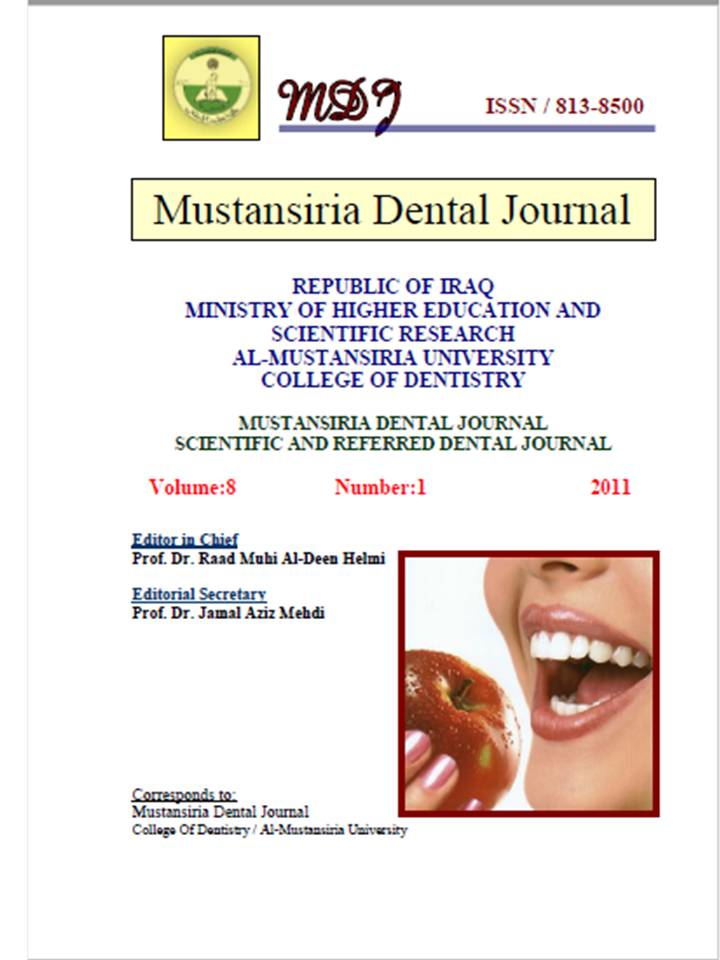Sealing Ability of the Formed Apical Calcified Bridge in Open Apex Roots
DOI:
https://doi.org/10.32828/mdj.v8i1.271Keywords:
Keywords: Sealing ability of apical calcify bridge, open apex roots, Ca(OH)2 paste, WMTA, GMTAAbstract
A successful endodontic treatment requires that the apex of the treated tooth be
completely and densely sealed with root canal filling material. One of the most
difficult endodontic problems is the management of necrotic immature tooth due to
the blunderbuss apex and the difficulty in achieving a tight seal between the root canal
system and the external surface of the tooth. The aim of this study was to evaluate the
sealing ability the apical calcified bridge formed by calcium hydroxide paste, white
MTA or gray MTA during apexification procedure.
Thirty premolars with single root canals were prepared to simulate an open apex.
These roots were divided into 3 groups as follow: Group A: 10 roots filled with
Ca(OH)2 paste, Group B: 10 roots filled with white MTA, and Group C: 10 roots
filled with gray MTA. Each root was placed in a polyethylene vial containing 25 m1
of synthetic tissue fluid (STF) and incubated at 37°C for 3 months. After 3 months
and the formation of calcified bridge, each root was immersed in 2% freshly prepared
Methylene blue dye in 5 ml plastic vial for seven days. After the leakage period, the
roots were removed from the dye and the leakage in all roots was examined by
measuring the linear extent of dye penetration from the apical end of the canal
preparation to the coronal direction by means of a light stereomicroscope at (40 X)
magnification with calibrated grid.
Ca(OH)2 paste group has the highest mean value of apical dye penetration
followed by WMTA, while GMTA group shows the lowest mean value of apical dye
penetration. There was a highly significant difference in the apical dye penetration
(p<0.01) among these groups, statistically a high significant difference is found
(p<0.01) between Ca(OH)2 group and WMTA group, and between Ca(OH)2 group
and GMTA group; whereas, significant difference is found (p<0.05) between WMTA
group and GMTA group.
The apical calcified bridge formed by GMTA has the best sealing ability followed
by that formed by WMTA. While the apical calcified bridge formed by Ca(OH)2 paste
has the lowest sealing ability as compared with that formed byWMTA and GMTA.

Downloads
Published
Issue
Section
License
The Journal of Mustansiria Dental Journal is an open-access journal that all contents are free of charge. Articles of this journal are licensed under the terms of the Creative Commons Attribution International Public License CC-BY 4.0 (https://creativecommons.org/licenses/by/4.0/legalcode) that licensees are unrestrictly allowed to search, download, share, distribute, print, or link to the full texts of the articles, crawl them for indexing and reproduce any medium of the articles provided that they give the author(s) proper credits (citation). The journal allows the author(s) to retain the copyright of their published article.
Creative Commons-Attribution (BY)








